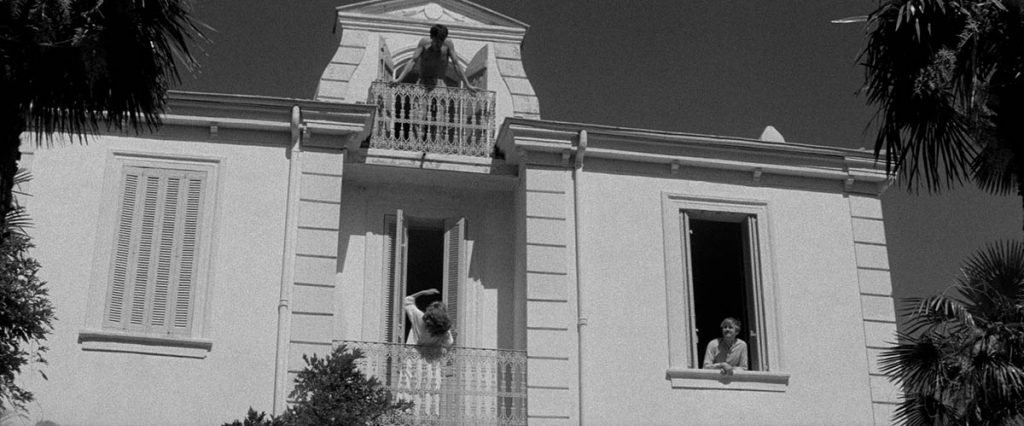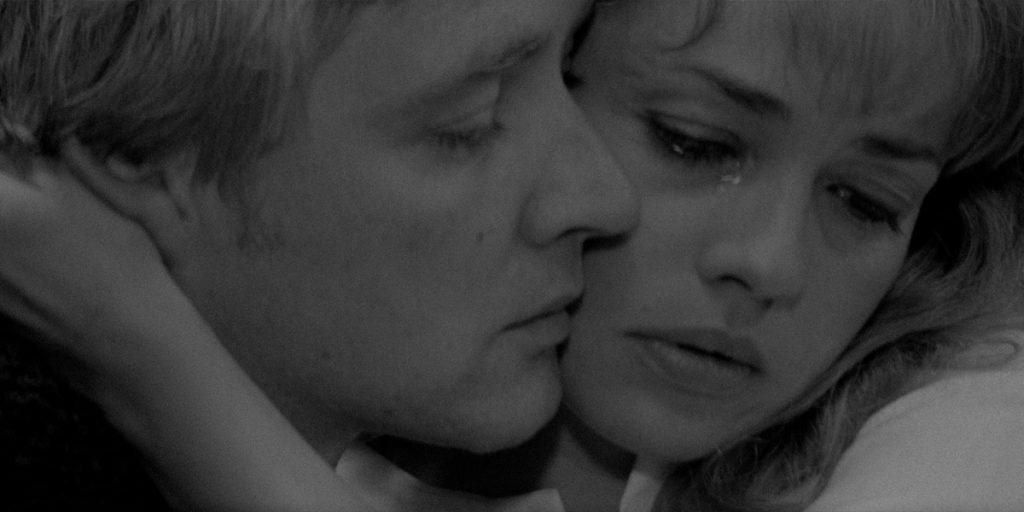A film that turns 60 years old this year, Jules et Jim is François Truffaut ’s brilliant film about a care-free Bohemian trio – and the complex love triangle that gets in the way.
When French cinema needed rejuvenating in the late 1950s, a band of new directors came together to form a new movement. It was called the French New Wave, and it proved to be a ground-breaking and unconventional wave of filmmaking. One of the lead filmmakers of the French New Wave was François Truffaut. A writer for the influential magazine “Cahiers du Cinéma”, he soon became known for directing The 400 Blows and Shoot the Piano Player, as well as co-writing Jean-Luc Godard’s Breathless. The British Film Institute (BFI) is currently running a season about Truffaut, showing his films across the UK and on their streaming service BFI Player. And this week, they are re-releasing his 1962 romantic drama about two French Bohemian men who enter into a love triangle with a capricious woman. The film is Jules et Jim, an underrated gem that turns 60 this year.
Set before, during and after the First World War, Jules et Jim starts with the titular characters forming a friendship as they look for a costume for Jules. The two are from different countries – Jules (Oskar Werner) is from Austria, Jim (Henri Serre) is from France – and they both possess different looks and personalities. But they are both authors living as Bohemians in Paris, womanising and writing in equal measure. One day, they meet the free-spirited Catherine (Jeanne Moreau), who joins them on a series of fun adventures. Soon enough, Jules starts to fall in love with Catherine, which Jim acknowledges. As the narrator (Michel Subor) remarks, “Jim considered her to be Jules’ and didn’t try to form a clear picture of her”.
The trio seemingly has conflict-free, whimsical, perfect lives. But there are cracks to this façade. After a disagreement over a play, Catherine jumps into a river. Then WWI breaks out, with Jules and Jim forced to fight on opposite sides. When the war ends, Jim visits Jules, Catherine and their daughter Sabine (Sabine Haudepin) at their chalet in the Rhine. Everything seems happy once again. However, Jules later reveals that Catherine recently left him for six months. Is she unhappy with her role as a wife and mother? Does she really love Jim? And will her feelings for him be reciprocated when the three reunite after the war?
Jules et Jim is based on Henri-Pierre Roché’s 1953 novel of the same name (Truffaut discovered the book in 1955 and quickly became friends with the author). The French New Wave was not usually known for reworking classic French novels, but Truffaut bucked the trend to create an intricate and faithful adaptation of this Bohemian love triangle. And even if it is in smaller doses than other films like The 400 Blows, this film still demonstrates the revolutionary impact of the New Wave movement. There is that experimental edge only with a story that is cleaner and more effective. I always preferred Truffaut to Godard, and his storytelling is one of the reasons why.

Thanks to cinematography from Raoul Coutard (who also worked on Breathless), Jules et Jim is a visually stunning film. The techniques you would expect from the French New Wave – the shaky, handheld camerawork and snap zooms – are present, but Coutard’s use of CinemaScope means it is shown on a wide scale. Then there is the rapid editing (another trope of the movement). From the freeze frames that remind you of The 400 Blows’ iconic ending to the use of newsreel footage, it enforces a tireless pace that is also present in the narrative. Jules et Jim is a film of many digressions. Subor’s narration will describe an event or character trait then never return to it. Early on, a woman named Thérèse (Marie Dubois) joins the duo and even spends time in Jules’ house. And then, she absconds with a new gentleman, becoming a fleeting but fun memory.
‘Fun’ is an important word because Jules, Jim and Catherine live with as much carefree abandon as possible. No matter what they do, where they are, there is always a sense of joy when they are together. The first half of the film is a timeless romanticisation in the past, not necessarily of the past. That notion is bolstered by Georges Delerue’s music, which contains some comedic ragtime pieces but is also romantic and yearning. However, when war is declared, that playfulness mostly disappears. The second half sees the film take on a great weariness, the Bohemian quirks giving way to marital dramas, cold reality and the fear of killing your best friend. Even afterwards, when Jim travels to Jules and Catherine’s chalet, he first takes a pilgrimage to the places where he fought. War has changed him.
For his main trio, Truffaut chose a cast with beguiling facial features and equally engaging emotions. As Catherine, Jeanne Moreau takes this incredibly complex character and plays her perfectly. She can be sweet but demanding, cheerful yet in constant need of assurance. And in the end, her jealous and tempestuous reactions lead to madness and tragedy. Meanwhile, Henri Serre is excellent as Jim. In particular, the second half sees him gain a wealth of experience and pathos as he tries to navigate his feelings for Catherine and her erratic behaviour. And whilst Oskar Werner doesn’t stand out as much, he brings a softer, more introverted side to the film as Jules.
The ending of Jules et Jim sees Jules wanting to perform one last act of freedom and whimsy. It would be like something from a Bohemian dream. Alas, life gets in the way. Regulations prohibit that dream, and Jules can only walk away. That becomes the crucial scene in understanding why François Truffaut’s romantic drama is brilliant. It is a film where eccentric, young Parisians are dragged down by adulthood and other complications. And because of Raoul Coutard’s camerawork and the erratic editing, it is presented in a distinctive, timeless style. 60 years on, Jules et Jim remains one of the definitive works of the French New Wave.
Jules et Jim will be released in the UK in selected cinemas from 4 February, 2022 and on Blu-ray by the BFI in the spring. The BFI Southbank season FRANÇOIS TRUFFAUT: FOR THE LOVE OF FILMS is running now until the end of February.

